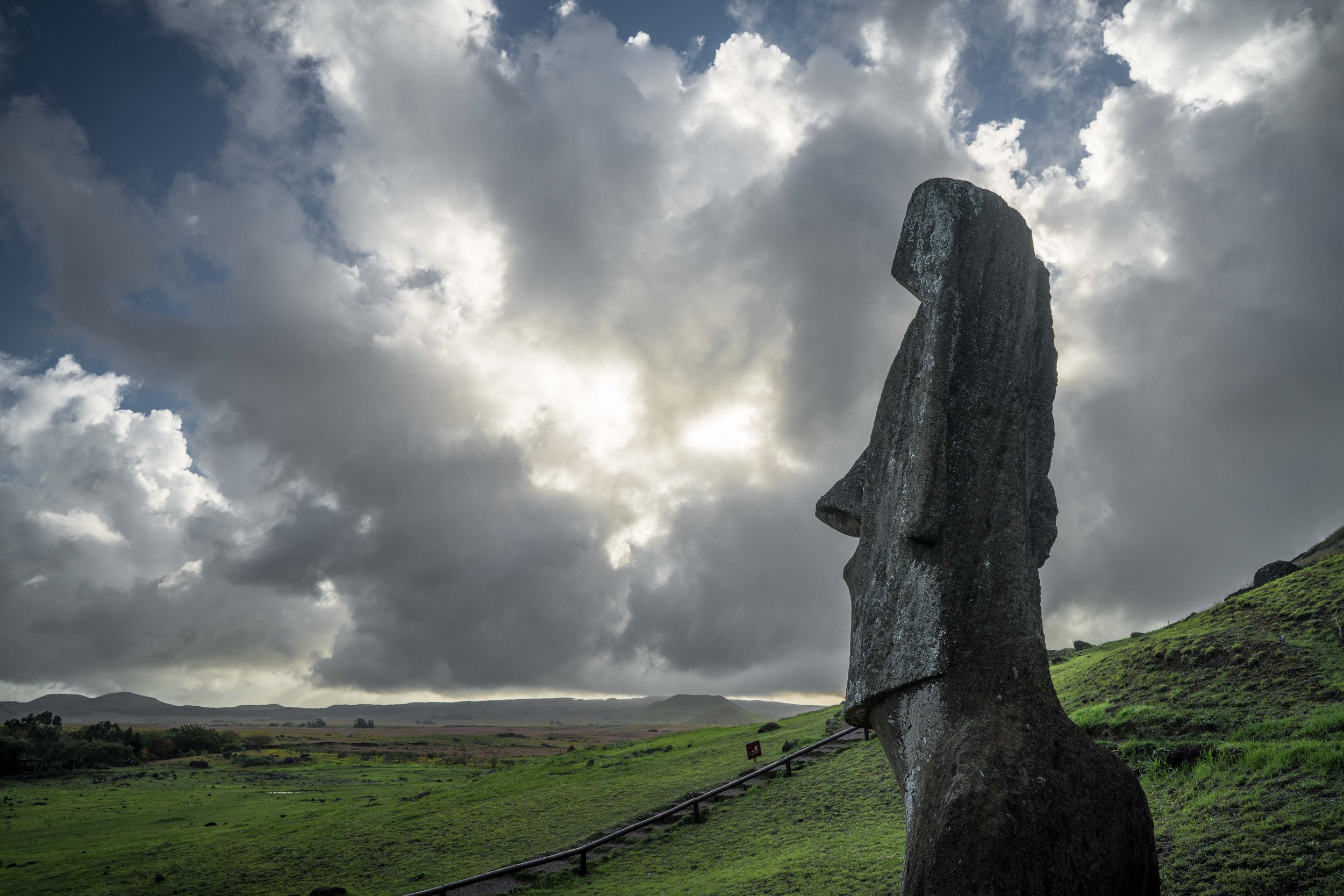the moai
spirits of the ancestors
Rano Raraku quarry
Arguably the most recognizable and iconic of Easter Island’s cultural elements are the giant stone statues known as moai, depicted in almost every reference to the island and standing at the center of both fascinating anthropological debate and many conspiracy theories (No; they were not brought there by aliens!).
The islanders began carving moai in the 1400s, and it is strongly believed that these figures were meant to embody the spirits of ancestors who had died and to give them a form from which they could watch over and protect the living. In most cases, they were erected on stone platforms called ahu, either alone or in groups, always with their backs to the sea so that they could watch over the villages.
Ahu Tongariki
Ahu Tongariki
The moai are four meters high, on average, with larger examples reaching around 10 meters. The exact form and style vary; the moai changed slowly over the history of their production, though most share general features, specifically elongated noses and ears. They were carved originally from basalt, but this shifted in later years to the volcanic tuff found at the Rano Raraku quarry. In either case, these statues were incredibly large and heavy -- the largest weighed around 86 tonnes -- and a lot of debate still exists as to how they were moved to their final positions. Were they rolled on logs or “walked” upright using ropes and counterweights? Once they were brought to their destination and mounted upright, white coral was used to fashion their eyes, and in many cases, a large red slag cylinder was placed on top of their heads, its size thought to be an indicator of tribal hierarchy or social importance.
The energy and resources that went into carving, transporting, and erecting the moai was significant, and is thought to be a key element of the societal decline of Rapa Nui in the 1800s. As the population of the island increased, conflict among clans became heated, accelerating competition for resources. Timber especially, a resource believed to have been critical in the transport and installation of the moai, became limited, and deforestation, resource depletion, and overpopulation collectively led to the near-collapse of Rapa Nui civilization. As the conflict among clans ramped up, they began actively knocking down or defacing one another’s moai. When Captain Cook arrived in 1774, a few of the statues had been knocked down, but most remained upright; by the mid-1800s, only a few moai remained standing. This period in Rapa Nui history is covered thoroughly as a chapter of the book Collapse: How Societies Choose to Fail or Succeed by Jared Diamond, and is a fascinating read.
Dry stone masonry used to build the ahu platforms
In all, almost 900 moai still exist on Rapa Nui today, scattered all across the island. Many have been restored (or are in the process of being restored); some lie hidden in the grass; and many remain only partially completed by their carvers, frozen in time with their features just emerging from the stone.
I found the moai timeless and hauntingly beautiful. I of course visited all of the ahu where the moai had been restored to standing. But I also encountered moai all over the island, some broken into pieces, some on their backs in tall grass, staring up at the sky. On many of my drives and walks through the island, I was completely alone, which made it that much easier to be enchanted by their presence.
Toppled moai
Rano Raraku quarry








